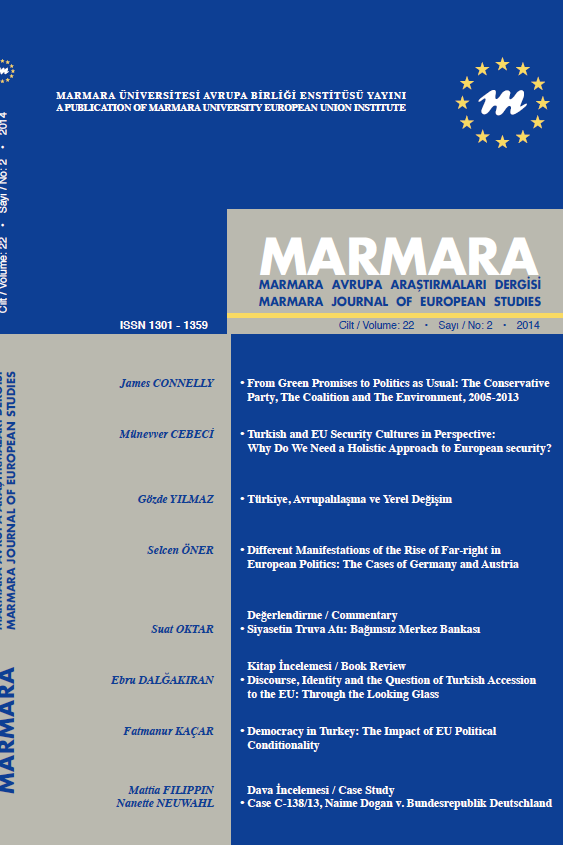DÜNYA TİCARET ÖRGÜTÜ KAMU ALIMLARI ANLAŞMASINA GENEL BİR BAKIŞ VE BU ANLAŞMANIN AVRUPA BİRLİĞİ’NDE UYGULANMASI
Dünya Ticaret Örgütü (DTÖ) Kamu Alımları Anlaşması (KAA) dünya ticaretinin serbestleştirilmesine katkı yapmayı ve kamu ihale piyasasını uluslararası ticaret kurallarının kapsamı altına almayı amaçlamaktadır. Şu anda 42 ülke bu Anlaşmaya taraf olmuştur. Anlaşma bir kamu ihalesine katılan işletmeleri doğrudan muhatap alan çeşitli düzenlemeler içermesi itibariyle yeni bir çığır açmıştır. Anlaşma, kendi kapsamına giren ihalelerde, taraf ülkelerin ve tedarikçilerinin yararına olacak şekilde ayırımcılık yapılması yasağı, ulusal muamele, en çok kayırılan ülke ve şeffaflık prensiplerini temel almaktadır. Acaba bu işletmeler KAA’nın ilgili hükümlerini gerekçe göstererek Avrupa Birliği (AB) hukuku bağlamında bu hükümlerin uygulanmasını talep edebilirler mi? Ya da bu işletmeler KAA’dan kaynaklanan haklarını ancak AB yasa koyucusunun kendi iç hukukunu (AB hukukunu) KAA’ya uyumlaştırdığı oranda ve bu Anlaşma kapsamında kalan yabancı işletmelere Anlaşmada uygulanması öngörülen usuller doğrultusunda mı ileri sürebilecektir? Bu makale okuyucuya KAA hakkında genel bir bakış sağlamakta ve KAA’nın temel niteliklerini gözden geçirmektedir. Bunun yanı sıra makale, KAA’nın bazı hükümlerinin AB Üye Devletlerinin ulusal mahkemelerinde uygulanmasını ileri sürme sorununu da tartışmaktadır. Makalenin ilk kısmı DTÖ KAA’yı uluslararası kamu ihale mevzuatı bağlamında analiz etmekte ve bu açıdan önemli noktalara değinmektedir. İkinci kısım, KAA’nın hukuki niteliği ve temel özelliklerini incelemektedir.
Anahtar Kelimeler:
Dünya Ticaret Örgütü, Kamu Alımları Anlaşması, kamu ihaleleri, ayırımcılık yapma yasağı, şeffaflık, ticaretin serbestleştirilmesi
GENERAL OVERVIEW OF THE GOVERNMENT PROCUREMENT AGREEMENT OF THE WORLD TRADE ORGANIZATION AND IMPLEMENTATION OF THIS AGREEMENT IN THE EUROPEAN UNION
The World Trade Organization Government Procurement Agreement (GPA) aims to contribute to the liberalization of world trade and to bring government procurement under international trade rules. Currently, 42 countries are parties to the agreement. The GPA is breaking a new ground in that it contains numerous clauses which appear to directly address undertakings involved in a procurement procedure. It contains obligations of non-discrimination, national treatment, mostfavored-nation treatment and transparency principles for procurement of goods and services by related government entities of its signatories. The GPA is based on the principles of openness, transparency and non-discrimination, which apply to Parties' procurement covered by the Agreement, to the benefit of Parties and their suppliers. But can these undertakings rely on related GPA provisions under the European Union (EU) law? Or are their benefits acquired from the GPA limited to the extent that the EU has decided to align its own internal law (EU law) with the procedures that it must apply towards certain external contractors under the GPA? This paper provides the reader with a general overview of the GPA and gives an overview of the main characteristics of the GPA. In addition, it discusses the question whether suitable GPA provisions can be invoked in the national courts of EU Member States. Section one highlights and analyses the WTO GPA within the context of international public procurement legislation. Section two examines the main features of the GPA and its legal nature
Keywords:
World Trade Organization, Government Procurement Agreement, public contracts, non-discrimination, transparency, liberalization of trade,
___
- ğlu H., (2006), AT Hukukunun Üye Ülkelerde Uygulanmasında Ulusal Mahkemeler ve ATAD İlişkisi, Ankara Üniversitesi Avrupa Toplulukları Araştırma ve Uygulama Merkezi Araştırma Dizisi No: 24, Ankara Üniversitesi Basımevi, Ankara. Agreement on Government Procurement, http://www.wto.org/english/docs_e/legal_e/gpr- 94_e.pdf, Erişim: 15 Ocak 2014. Anderson R. D., Muller A.C., Osei-Lah K. & Pelletier P., (2012), “Assessing the value of future accessions to the WTO Agreement on Government Procurement: some new data sources, provisional estimates, and an evaluative framework for WTO members considering accession”, Public Procurement Law Review, 4, ss. 113-138. Anderson R. D. & Kovacic W. E., (2009), “Competition policy and international trade liberalisation: essential complements to ensure good performance in public procurement markets”, Public Procurement Law Review, 18(2) ss.67-101. Anderson R. D., (2007), “Renewing The WTO Agreement On Government Procurement: Progress To Date And Ongoing Negotiations”, Public Procurement Law Review, 4, ss. 255-273.
- Anderson R. D., (2006), “Current Developments on Public Procurement in the WTO”, Public Procurement Law Review, 6, ss. 167-178.
- Anderson R. D., (2012), “The conclusion of the renegotiation of the World Trade Organization Agreement on Government Procurement: what it means for the Agreement and for the world economy”, Public Procurement Law Review, 3, ss. 83-94.
- Arat T. ve Erten R., (2008), “DTÖ Hukuku ve Türkiye’ye Etkileri”,in M. Sait Akman ve Şahin Yaman (Ed.),Dünya Ticaret Örgütü Doha Turu Çok taraflı Ticaret Müzakereleri ve Türkiye, Ankara, Tepav Yayınları No:39.
- Arrowsmith S., (2003), Government Procurement in the WTO, Studies in Transnational Economic Law, Kluwer Law International, The Hague.
- Arrowsmith S., (1996), The Law of Public and Utilities Procurement, Sweet & Maxwell, 1st Edition, London. Arrowsmith S. Linarelli J.& Wallace D., (2000), Regulating Public Procurement, Kluwer Law International, London, 1st Edition.
- Bovis C., (2006), “The New Public Procurement Regime: A Different Perspective on the Integration of Public Markets of the European Union”, European Public Law,12(1), ss. 73-109.
- Cao F. (2013), “Building up SME programmes in government procurement in China: legal structure, recent developments and the way forward towards the WTO-GPA”, Public Procurement Law Review, 6, ss. 211-224.
- ISSN: 1301-1359
- Başlangıç: 1991
- Yayıncı: Marmara Üniversitesi
Sayıdaki Diğer Makaleler
AVRUPA BAĞLAMINDA TEMETTÜ DEĞİŞİKLİKLERİNİN TERS PİYASA REAKSİYONU
LİZBON SONRASI AVRUPA BİRLİĞİ’NİN YENİLENEN TEMEL HAKLAR SORUNSALI
KİTAP İNCELEMESİ: AVRUPA BİRLİĞİ’NDE KİMLİK, KÜLTÜR TARTIŞMALARI VE TÜRKİYE
GÖÇÜN GÜVENLİKLEŞTİRİLMESİ: TÜRKİYE-AVRUPA BİRLİĞİ İLİŞKİLERİ ÖRNEĞİ
